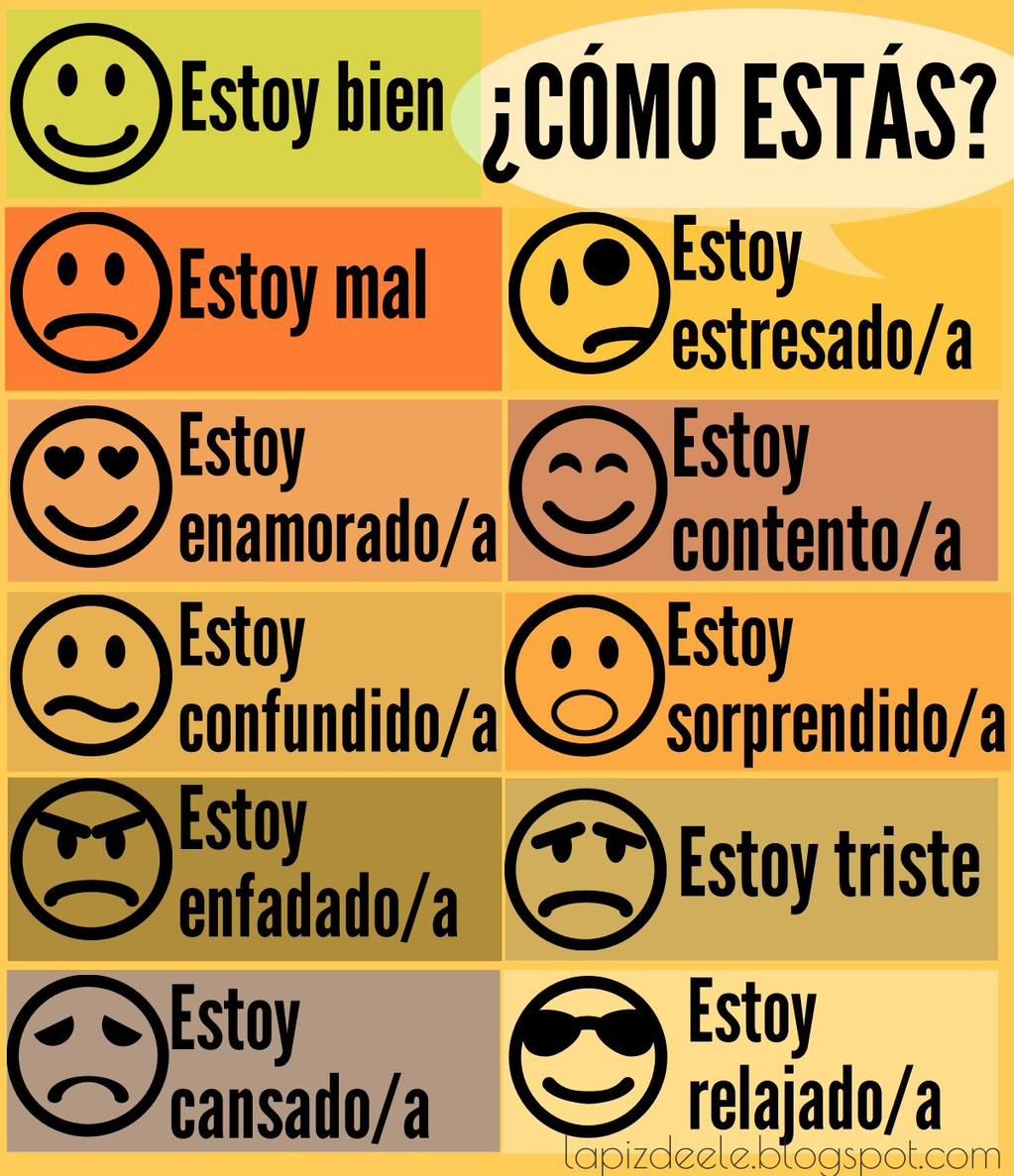
¿Qué tal estas colaciones express?
'Qué tal' is a great example of a fairly neutral phrase because it has a casual ring to it (after all, it is an abbreviation of a longer phrase), but is commonly used in more formal settings too! It can be used when talking to a friend or acquaintance - Dos amigos se encuentran en la calle ¿Qué tal, Jorge? ¡Hola, Ramón!

¿Qué tal estás? Game Box SchleswigHolstein Schulbuch 978312
¿Qué tal? Spanish definition | Spanish synonyms | Gramática | Conjugación [ES] | Conjugator [EN] | in context | images WordReference WR Reverse (19) En esta página: ¿Qué tal?, qué tal WordReference English-Spanish Dictionary © 2023: Is something important missing? Report an error or suggest an improvement.
QUÉ TAL ESTÁS
Here are some of the common ways that native speakers respond to the Spanish equivalent of "How are you?". 1. "Muy bien, gracias. ¿Y tú/usted?". Download Article. This is the standard response, and translates to "Very well, thanks. How about you?". You can never go wrong with this expression, which is why you'll hear it all the.

Spanish Emotions 2.9K plays Quizizz
Is a casual greeting that can be translated as :Whats up? You also use Qué tal to ask about specific situations: Que tal + noun example: ¿Qué tal tu día? - How is your day? ¿Qué tal tu familia? - How is your family? ¿Qué tal tu salud? - How is your health? ¿Qué tal tu trabajo? - How is your work? ¿Cómo estás?

¿Qué tal estas colaciones express?
Letter and Email Greetings. When writing a formal letter or a business email, you need to use a formal vocabulary and specific Spanish greetings. Here are some of the most common ones: Spanish. English. Estimado Señor/Señora/Señorita _____. Dear Mr./Mrs/ Miss _____. A quien corresponda.

Que tal estas pasando el día? Nos tomamos un pincho Redes sociales
Qué tal and cómo estás are two phrases native Spanish use constantly use when greeting someone. Their fundamental meanings are very similar: How are you? However, qué tal and cómo estás may have other connotations depending on the situation and context they're uttered in. Let's see each of these common Spanish expressions in detail.

¡Feliz jueves familia! 🙋♀️🤩 ¿Qué tal? ¿cómo estás hoy? Espero que
tal adj — such adj · any such adj estar v — be v · feel v · lie v See alternative translations © Linguee Dictionary, 2024 External sources (not reviewed) Many translated example sentences containing "qué tal estás" - English-Spanish dictionary and search engine for English translations.

Usuario Dr_Fire Desmotivaciones
Qué tal vs cómo estás is one of the first debates new Spanish learners engage in. That's because these two everyday Spanish phrases are so common. But, what's the difference between qué tal and cómo estás? Are they the same? Or do they only exist to torment new learners of the language like yourself?

Usuario ppp1 Desmotivaciones
Native here, you say "nada" when someone ask you "¿Que te pasa?" (What´s wrong) and you are ok or you dont want to tell whats wrong. So the correct answer in an informal environment to "¿Que tal?" would be "bien". aspracrotes.

¿Qué tal estas deliciosas galletas de arroz inflado con Aladino® para
"¿qué tal estás": examples and translations in context See how "¿qué tal estás " is translated from Spanish to English with more examples in context Advertising

Que tal estás hoy? Normalmente os hago preguntas muy rebuscadas pero
English Translation of "¿QUÉ TAL?" | The official Collins Spanish-English Dictionary online. Over 100,000 English translations of Spanish words and phrases.

¿Qué tal estás? Soyvisual
1. As a greeting akin to "What's up!" ¡Cómo estás, wey! = What's up, bro! 2. Used to mean "How are you?" or " How's it going? " ¡Hola! ¿Qué tal? = Hey! How's it going? If we add a noun after ' qué tal ', we can enquire as to the status of something, such as a person's well being or the development of a particular situation - ¡Hola!

Hola niña ¿qué tal estas? Desmotivaciones
'Qué tal' is a common Spanish phrase used to ask someone how they're doing or how things are going. Usage of 'qué tal' reflects social hierarchies and power dynamics. Formal variation of 'qué tal' such as '¿cómo está usted?' is used in formal settings or when addressing someone of higher social status.

👉Que tal estas? YouTube
¿Qué tal estás? ( keh tahl ehs - tahs ) phrase 1. (general) a. How are you? Buen día, Juliana. ¿Qué tal estás?Good morning, Juliana. How are you? b. How are you doing? ¿Qué tal estás? - Bien. ¿Y tú?How are you doing? - I'm doing well. And you? Copyright © Curiosity Media Inc.

Qué tal Meaning, uses, and comparison with Cómo estás
The main distinction between Que Tal and Qué Tal is that Spanish speakers use Qué Tal. when they are or feel more connected to the thing or person being asked about. Hence, it is best used in an informal setting. On the other hand, Como Estas is best suited when you do not feel close to or related to the person you're asking about.

Hola! Qué tal, Cómo estás? Podcast Podtail
Que tal VS. Que tal estas . I remember learning "Que tal" as "how are you" back in school, but today on Duolingo I was presented with the phrase "Que tal estas, Camila?" Is the "estas" only added due to using the name in the sentence? Or is it optional, and both "Que tal, Camila?" and "Que tal estas?"